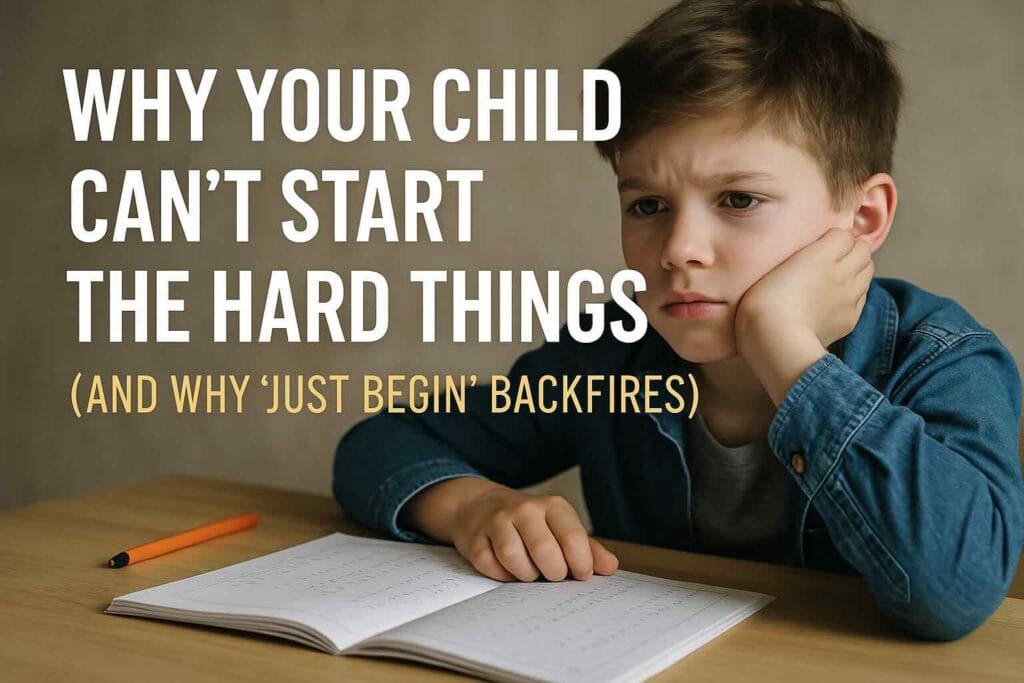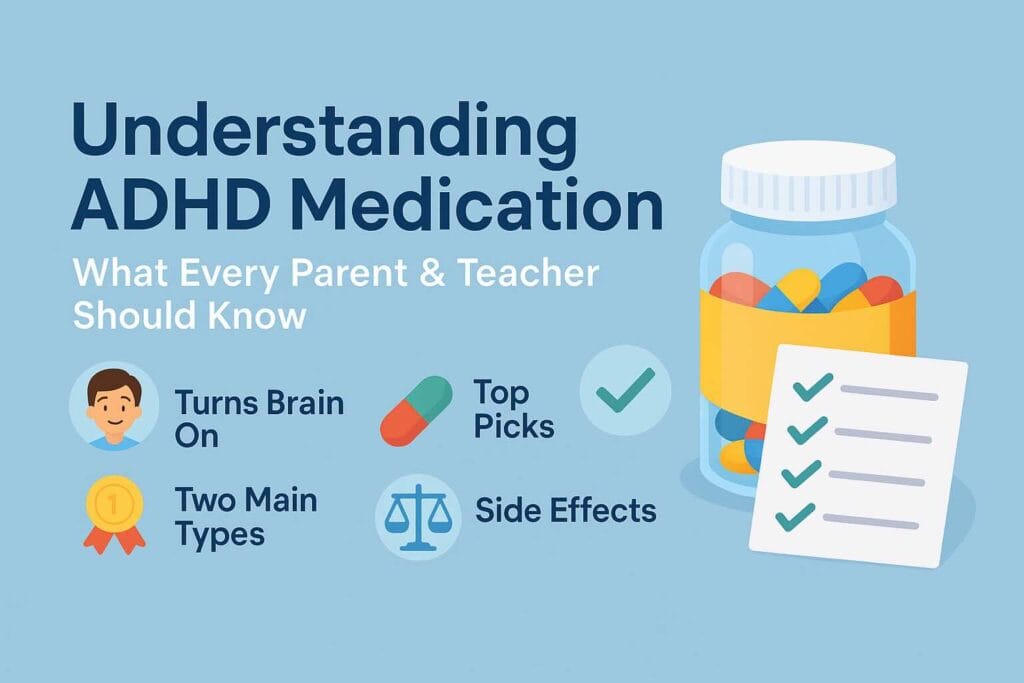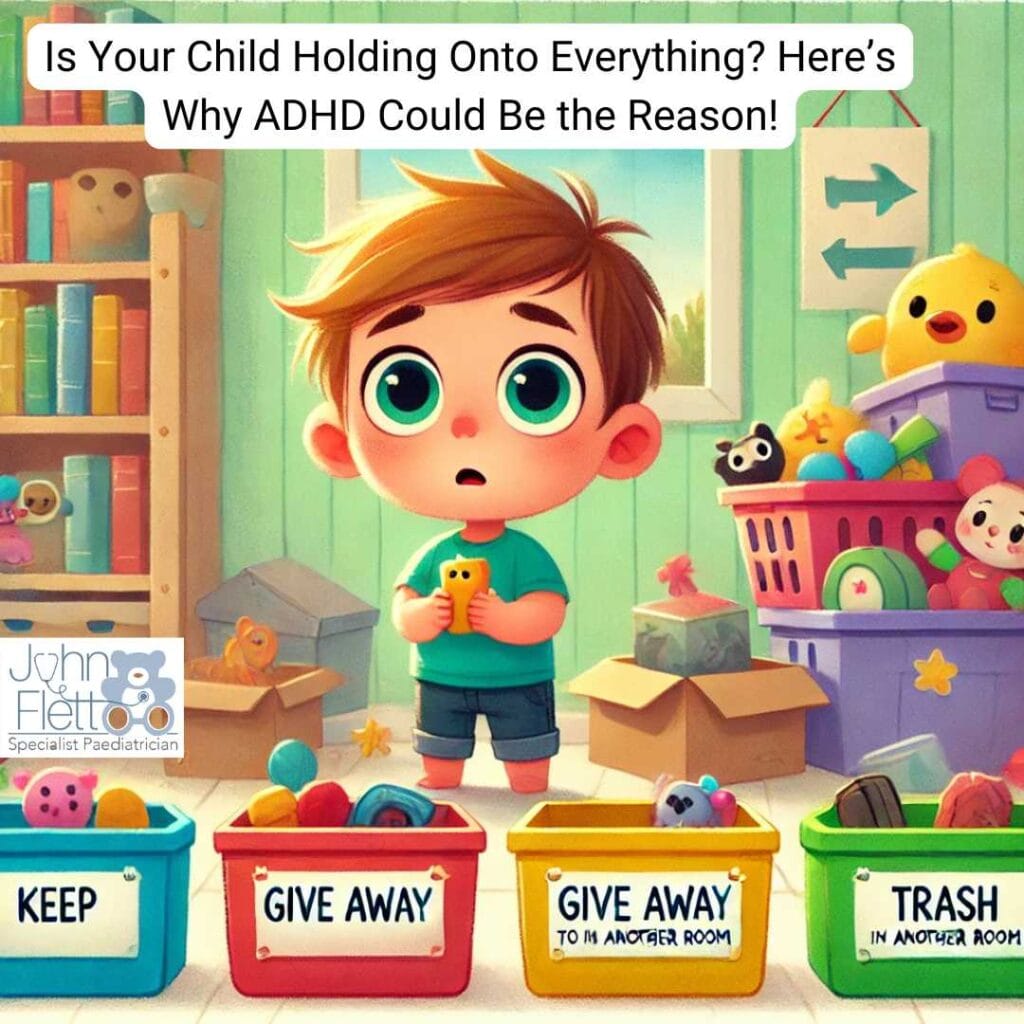ADHD Teens: How to Break Procrastination, Gaming and Emotional Spirals

At 2am, you’re watching your teenager spiral again. They’ve left everything until the last minute, pulled an all-nighter, somehow delivered brilliant work, and now they’re in tears swearing they’ll never do this again. Except you both know they will. Next week. Next month. Forever, it seems.
This isn’t defiance. This isn’t laziness. This is your child trapped in a cycle of their own making—and understanding why this happens is the first step toward helping them escape.
The Architecture of Getting Stuck
Here’s what these patterns look like in real life:
Your child stays up late because they feel they never have enough time for what they want to do. They’re exhausted the next day because they didn’t sleep. They’re unproductive because they’re so tired. So they stay up late again to “catch up.”
Or perhaps: They struggle to make friends, so they retreat into gaming. The gaming makes it harder to connect with peers. So they game more to cope with the loneliness.
Even the simplest cycles trap them: They’re thirsty, so they drink loads of water. They need the toilet constantly. They feel dehydrated again from all the trips to the bathroom. They drink more water.
These patterns don’t just happen to struggling children—I see them in academically gifted, athletic, creative young people who seem to have everything going for them. The trap isn’t about capability. It’s about how ADHD brains respond to discomfort.
Why Fixing the Problem Doesn’t Fix the Problem
When families come to me, they understandably focus on the visible issues. “How do I fix the procrastination?” “How do I stop the gaming addiction?” “How do I help with the friendship problems?”
But here’s what’s fascinating: the problem isn’t actually the loneliness or the procrastination or the gaming. The problem is the arrow—the automatic response that creates the next problem.
Think of it like a cycle diagram. What keeps the cycle going isn’t what’s in the boxes (loneliness, anxiety, gaming). It’s the arrows between them—the automatic reactions that your child can’t seem to control.
The ADHD Brain’s Double Trap
Children with ADHD have brains that are wired differently in two crucial ways that make these cycles particularly vicious:
First, they feel everything more intensely. That loneliness isn’t just “a bit sad”—it’s crushing. That boredom isn’t mild restlessness—it’s physically painful. Their emotional limbic system runs at higher volume than in neurotypical children.
Second, they crave the solution more powerfully. When your ADHD child feels that uncomfortable emotion, their brain doesn’t just whisper “maybe do something about this.” It screams for relief. Right now. The craving circuits that drive motivation and reward-seeking are dysregulated in ADHD, creating overwhelming urges to escape discomfort.
Here’s what happens in your child’s brain:
They feel intense loneliness (emotional centre firing). They crave company desperately (reward centre demanding action). These two powerful signals crash together in the decision-making frontal lobes—which, in ADHD, are already struggling to regulate impulses. Result? They must reach out, must connect, must fix this feeling right now.
Why “Giving In” Makes Everything Worse
Every time your child responds to discomfort by seeking immediate relief, something crucial happens in their brain: those emotional and craving circuits get stronger. The pathways get wider. The signals get louder.
Their brain learns: “When you feel bad, act immediately. When you want something, get it now.”
This is why ADHD children who are impulsive in one area tend to be impulsive everywhere. It’s not separate problems requiring separate solutions. It’s one fundamental pattern: their emotional states and cravings are running the show.
Here’s the devastating part: this applies to both negative and positive feelings.
The Hidden Trap in Success
This might surprise you, but when your child gets an A on that last-minute essay—the one they pulled an all-nighter for—the rush of pride and relief actually strengthens the procrastination cycle.
“But surely feeling good about success is healthy?” you’re thinking.
Here’s the problem: that surge of achievement-related dopamine teaches their brain that the panic-work-relief cycle works. The intense emotion (panic) led to intense action (all-nighter) led to intense reward (pride, relief, praise). Their brain files this under “effective strategy.”
Similarly, when they discover a new interest and dive in obsessively—which ADHD children often do—they’re training their brain to be driven by curiosity and novelty. Which sets them up perfectly for the crash when that interest fades and they feel that familiar restless dissatisfaction, already scanning for the next obsession.
The hyperfocus isn’t the strength we often tell ourselves it is. It’s another cycle: intense interest, total immersion, inevitable boredom, desperate search for the next fascinating thing.
The Fine Line Between Love and Hate
Have you noticed how quickly your ADHD child’s feelings can flip? They adore their best friend one day, can’t stand them the next. They’re passionate about football, then suddenly it’s “boring” and they never want to play again.
This isn’t moodiness or drama. When your child’s emotional circuits are running the show, relationships and interests are entirely driven by feeling states. They loved their friend because they felt wonderful around them. They hate their friend now because they feel hurt or annoyed. Same circuit, different emotion.
This is why ADHD children often have intense, volatile friendships and why their interests shift so dramatically. The same brain wiring that creates the intense positive attachment creates the intense negative one when feelings change.
Breaking the Cycle: What Actually Works
So if responding to discomfort creates more problems, and basking in success reinforces unhealthy patterns, what on earth are we supposed to do? Let our children suffer?
Not quite. Here’s what actually helps:
1. Build Tolerance for the Uncomfortable Bit in Between
Life with ADHD often feels like swinging between “everything is terrible” and “everything is amazing” with no middle ground. Your child needs to discover that middle ground—the neutral state.
When they’re not particularly happy or sad, not excited or bored, not craving anything or avoiding anything—that’s where the power is. That’s the state that buffers against both the negative spirals and the dopamine-chasing.
Help them notice: “Right now, you’re just… okay. Nothing’s wrong. Nothing’s exciting. And that’s actually rather nice, isn’t it?”
2. The Power of Pausing
When your child feels that overwhelming urge—to game, to quit, to lash out, to dive into a new obsession—the most powerful thing they can learn is to pause.
Not to suppress the feeling. Not to distract from it. Just to notice it.
“I can feel my brain screaming at me to open that game right now. That’s really interesting. I’m going to sit with this feeling for two minutes and see what happens.”
Most ADHD children have never experienced what happens when they don’t immediately respond to an urge. The answer might surprise them: usually, nothing catastrophic. The feeling peaks, then fades.
3. Understand That Greed Drives the Cycle
This sounds harsh, but it’s actually compassionate: your child’s suffering continues because of their desperate need for it to stop.
When they feel lonely, it’s not the loneliness itself that’s intolerable—it’s their intense greed for it to be different, right now, that makes it unbearable.
When they procrastinate, it’s not the boring homework that’s the problem—it’s their overwhelming craving to be doing something, anything, more stimulating.
The greed for relief, for stimulation, for comfort, for novelty—that’s what keeps the wheel spinning. And greed in the ADHD brain is particularly powerful because the reward-seeking circuits are dysregulated.
What This Looks Like in Practice
Let’s say your child feels lonely. The automatic ADHD response is: “This is unbearable. I need to fix this. I’ll message everyone. I’ll post on social media. I’ll find someone, anyone, to talk to.”
Instead, you’re helping them learn: “I feel lonely. That’s uncomfortable. I’m not going to try to make it go away. I’m going to sit with this for a bit.”
This doesn’t mean wallowing in loneliness forever. It means not letting the emotional intensity and craving for relief drive automatic behaviours that create more problems.
Then something remarkable happens: once they’re not driven by desperate need, they can socialise from a place of genuine interest rather than desperate escape. And when social situations feel awkward, they won’t have that overwhelming pull to flee because they’ve learnt to tolerate uncomfortable feelings.
The Addiction Connection
You might be wondering why I’m talking about greed and craving when discussing ADHD children. Here’s why: ADHD and addictive patterns share the same brain wiring.
Those dysregulated reward pathways? They make ADHD children more vulnerable to all sorts of addictive patterns—not just substances, but gaming, social media, achievement, even drama and chaos. Anything that provides intense stimulation or relief from discomfort.
When we help ADHD children build tolerance for neutral states and uncomfortable feelings, we’re not just helping with homework and friendships. We’re protecting them from a lifetime of chasing the next hit of dopamine, whatever form that takes.
Moving Forward: Understanding as Intervention
Your child isn’t weak-willed. They’re not choosing to be difficult. Their brain is responding exactly as an ADHD brain does—with intense feeling, overwhelming craving, and minimal pause between impulse and action.
But they can learn new patterns. Not by trying harder or caring more, but by understanding the cycle and practising something revolutionary: not responding.
Not escaping discomfort with distraction. Not chasing every interesting impulse. Not requiring immediate relief from every uncomfortable emotion.
Just… pausing. Noticing. Tolerating.
It’s not easy. ADHD brains genuinely find this harder than neurotypical brains. But it’s possible, and it’s transformative.
Because once your child understands that they don’t have to be controlled by their emotional states and their cravings, once they’ve experienced that feelings pass without action, they’ve broken the fundamental architecture of every cycle they’ve been trapped in.
The homework procrastination. The friendship drama. The gaming spirals. The interest-hopping. All of it runs on the same mechanism: intense feeling plus overwhelming craving equals automatic action.
Change the response, break the cycle.
Understanding your child’s ADHD patterns is the first step toward helping them build healthier responses. If you’d like support in identifying these cycles and developing practical strategies, Dr Flett offers compassionate assessments and family guidance. Call 031 1000 474 or visit 8 Village Road, Kloof, Durban. Zoom consultations available for families across South Africa and beyond.






Responses